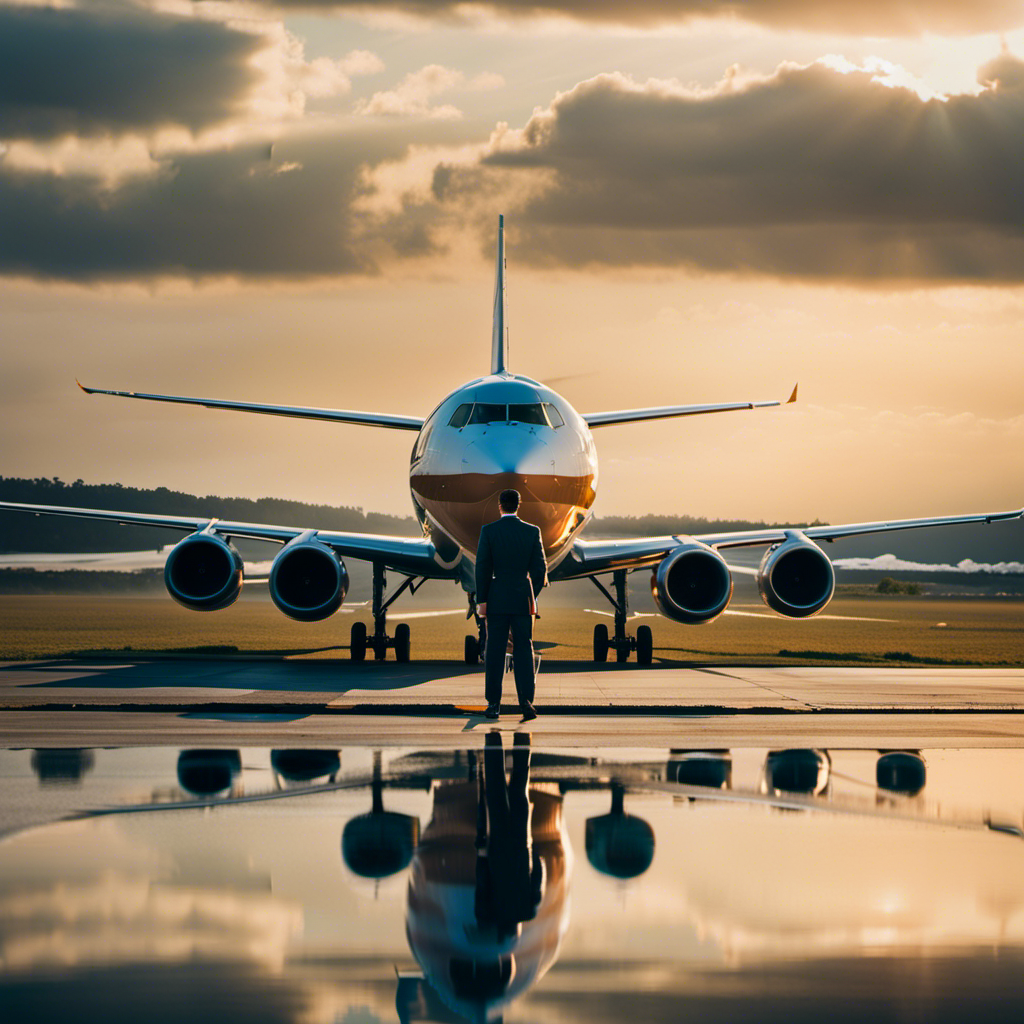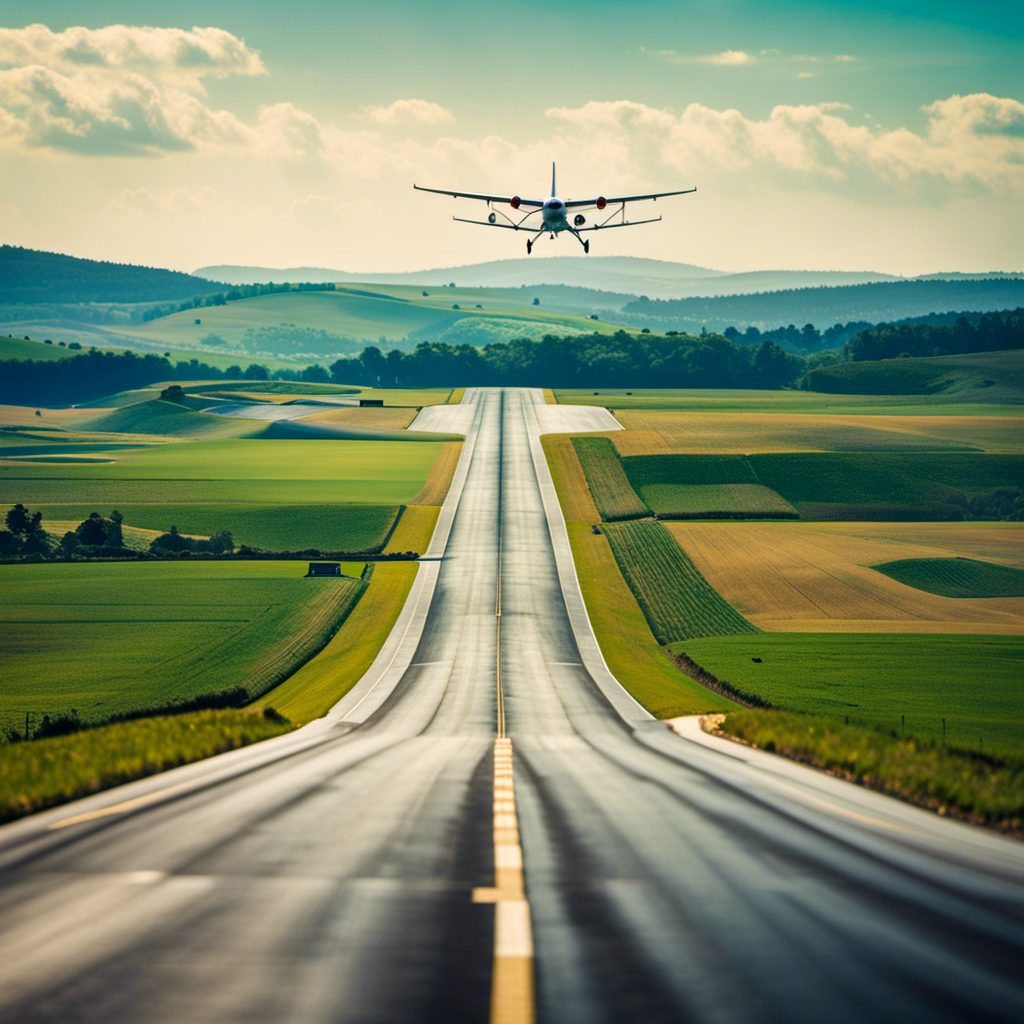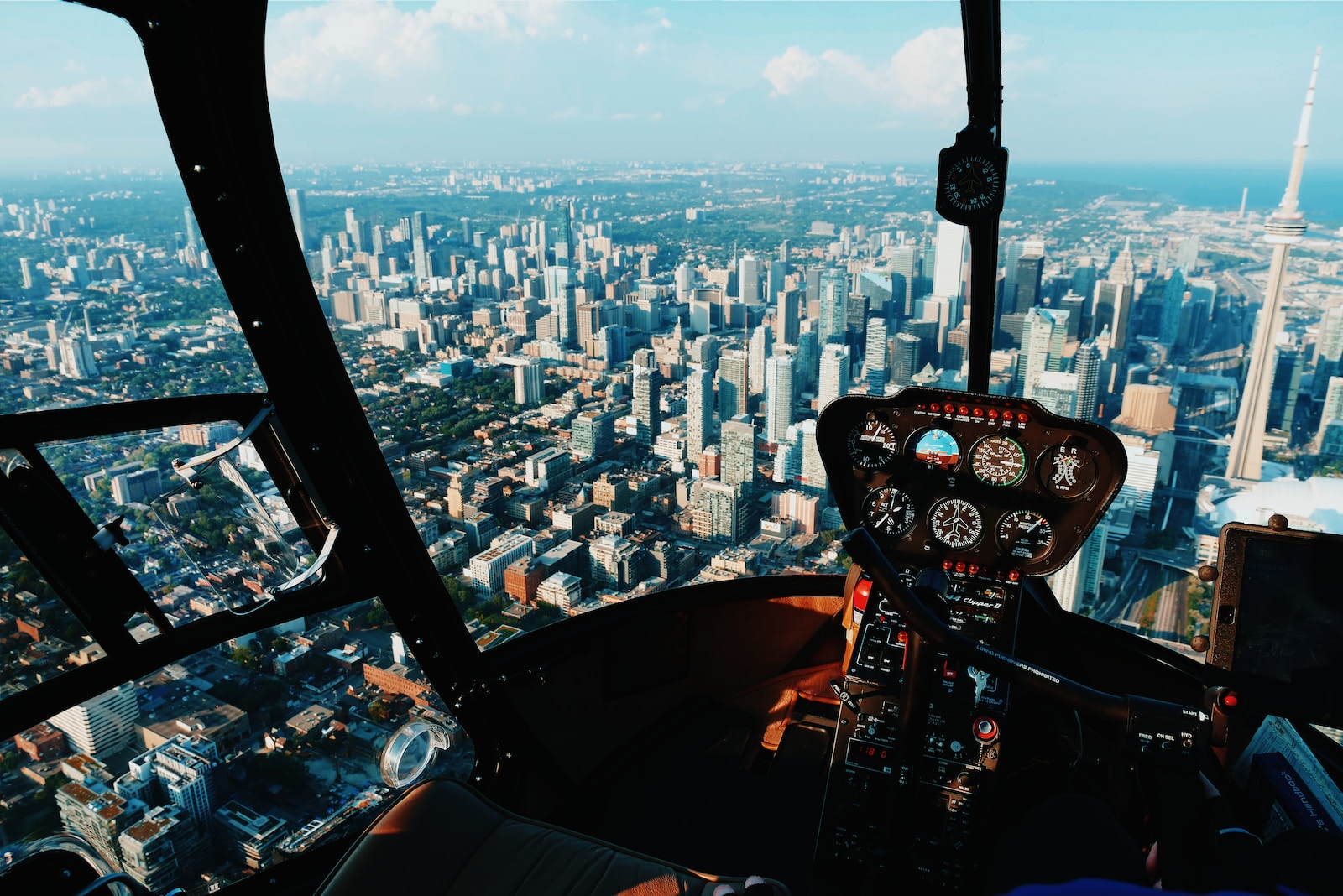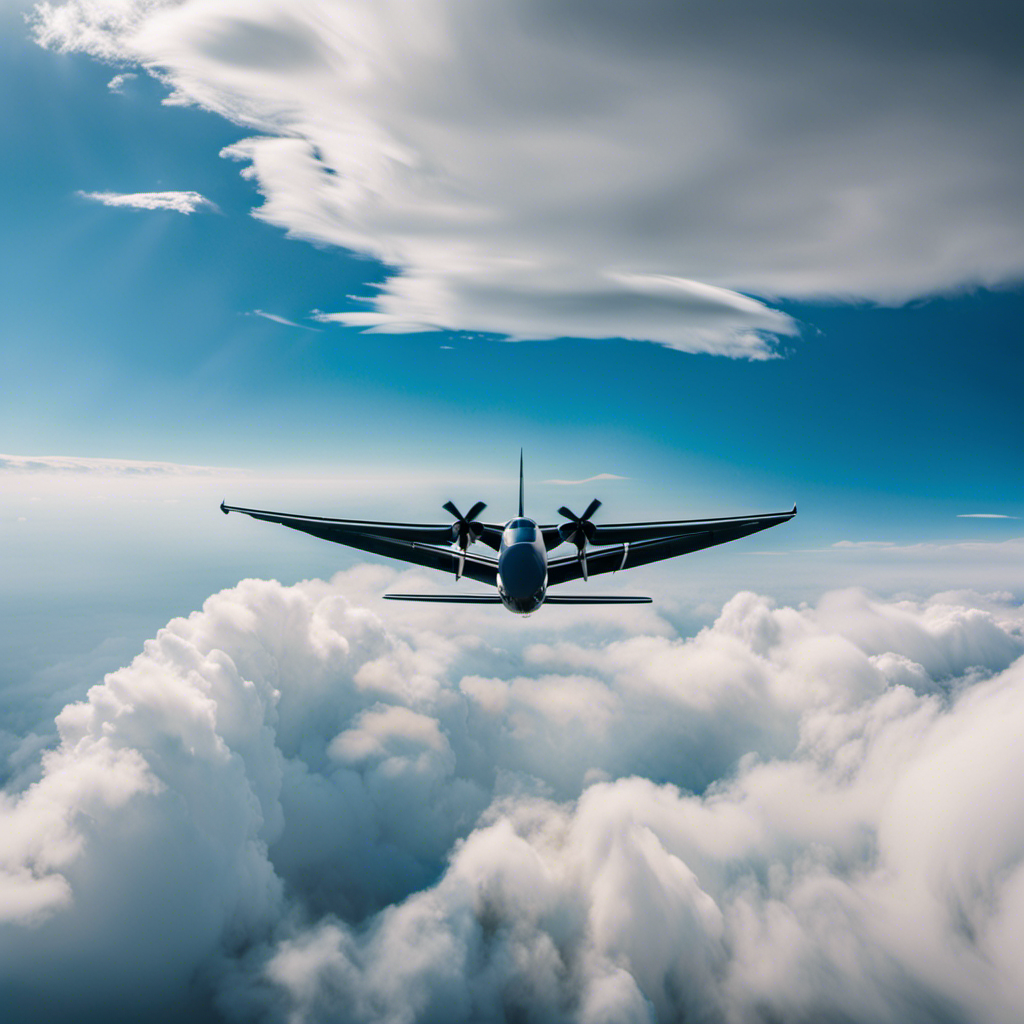If you share my passion for soaring through the sky and feeling the excitement of piloting a commercial aircraft, then you’re in the right place.
In this article, we will explore the exciting world of aviation careers and delve into the steps it takes to become a commercial pilot. From researching education requirements to gaining flight experience, we’ll cover it all.
So buckle up and get ready to learn how to turn your dreams of flying into a reality.
Key Takeaways
- Physical fitness and good health are crucial for success in aviation careers, as airlines prioritize physically fit candidates and pilots need to handle the physical demands of flying.
- The Airline Pilot Training Program provides the necessary skills and knowledge for the safe operation of planes, including classroom instruction, flight simulator sessions, and actual flight training.
- Continuous learning and professional development are essential in the aviation industry, with opportunities for attending industry conferences, seminars, and joining professional aviation organizations for networking and staying updated with the latest technologies and regulations.
- Pursuing advanced certifications and licenses, as well as gaining practical experience through flight simulator training and challenging assignments, can enhance job prospects, salary expectations, and demonstrate expertise in specific areas of aviation.
Explore the Different Types of Aviation Careers
There’s a wide range of aviation careers available for those interested in learning to fly commercial planes. The job market opportunities in the aviation industry are vast, with various positions to suit different skills and interests.
From being a commercial pilot, flight engineer, or air traffic controller, to working as a flight dispatcher or aviation mechanic, there are plenty of options to explore.
When it comes to salary potential, aviation careers can be quite lucrative. Commercial pilots, for example, can earn a median annual wage of around $121,430, according to the Bureau of Labor Statistics. However, salaries can vary based on factors like experience, the type of aircraft flown, and the airline or organization you work for.
It’s important to research the education and training requirements for the specific aviation career you’re interested in pursuing, as these can vary.
Moving on to the next section, let’s dive into the necessary steps to become a commercial pilot.
Research the Education and Training Requirements
Researching the education and training requirements for becoming a commercial airline pilot is essential. To pursue this career, individuals must meet specific education requirements and complete rigorous training programs. Here are three key aspects to consider:
-
Education requirements: Most commercial airlines require a bachelor’s degree in aviation or a related field. This provides a solid foundation in subjects like aerodynamics, aviation safety, and aviation law. Additionally, obtaining a private pilot’s license is often a prerequisite.
-
Training programs: Aspiring pilots must complete flight training programs approved by the Federal Aviation Administration (FAA). These programs typically include both ground and flight training, covering topics such as navigation, aircraft systems, and emergency procedures. Training hours can vary, but a minimum of 1,500 flight hours is usually required to obtain an Airline Transport Pilot (ATP) certificate.
-
Additional certifications: Pilots may need to obtain additional certifications, such as an Instrument Rating or Multi-Engine Rating, depending on the type of aircraft they wish to fly.
Choose the Right Flight School
Finding the right flight school is crucial for aspiring pilots who want to pursue a career in aviation. When it comes to choosing flight schools, there are a few key factors to consider.
First and foremost, it’s important to find a reputable instructor who has experience and expertise in the field. Look for instructors who have a strong track record, positive reviews, and a good reputation within the aviation community.
Additionally, consider the location and facilities of the flight school. Is it conveniently located? Do they have well-maintained aircraft and up-to-date training equipment? These are all important aspects to consider when making your decision.
Obtain the Necessary Licenses and Certifications
To obtain the necessary licenses and certifications, you’ll need to complete the required training and pass the corresponding exams. Obtaining pilot licenses and the required certifications is a crucial step in becoming a commercial pilot.
The licenses and certifications serve as proof of your qualifications and competence to operate an aircraft. The specific licenses and certifications you need will depend on the type of aircraft you plan to fly and the level of commercial aviation you wish to pursue.
These may include a Private Pilot License (PPL), Instrument Rating (IR), Commercial Pilot License (CPL), Multi-Engine Rating (ME), and Airline Transport Pilot License (ATPL). Each of these licenses and certifications requires specific training and examination.
Once you have acquired these licenses and certifications, you can move forward to gain flight experience and further enhance your skills as a commercial pilot.
Gain Flight Experience
Once you’ve obtained the necessary licenses and certifications, you’ll start gaining flight experience to further develop your skills as a commercial pilot. This is an essential step in your journey towards becoming a successful pilot in the aviation industry.
Here are three key aspects of gaining flight experience:
-
Flight Hours: As a commercial pilot, you’ll need to accumulate a significant number of flight hours to meet the requirements of different airlines. These flight hours will not only enhance your technical skills but also build your confidence and decision-making abilities in the cockpit.
-
Hands-on Training: During your flight experience, you’ll have the opportunity to practice various maneuvers and procedures, including takeoffs, landings, navigation, and emergency scenarios. This hands-on training will allow you to refine your skills and become proficient in handling different aircraft.
-
Flight Scenarios: Gaining flight experience in different scenarios, such as adverse weather conditions, high-altitude airports, or busy airspaces, will help you develop the ability to adapt and make sound judgments in challenging situations.
Build a Professional Network
Building a professional network as a pilot is crucial for career growth and opportunities. As I navigate my way through the aviation industry, I understand the importance of establishing connections and seizing networking opportunities.
Building a network allows me to learn from experienced pilots, gain insights into different airlines, and discover potential job openings. Attending industry conferences, joining professional organizations, and engaging in online aviation communities are effective ways to connect with industry professionals.
By actively participating in these networking opportunities, I can broaden my knowledge, develop valuable relationships, and stay updated on the latest industry trends.
As I build my professional network, I am better prepared to navigate the airline pilot selection process and take my career to new heights.
Prepare for the Airline Pilot Selection Process
As I prepare for the airline pilot selection process, I’ll need to research the requirements and qualifications necessary for the job.
Airline pilot selection techniques vary among airlines, but they typically consist of a series of assessments designed to evaluate a candidate’s aptitude, skills, and suitability for the role. These assessments may include written exams, simulator tests, interviews, and medical evaluations.
In addition to the technical and cognitive abilities, physical fitness plays a crucial role in the pilot selection process. Airlines prioritize candidates who are physically fit as the demanding nature of the job requires pilots to be in good health and capable of handling the physical demands of flying.
Maintaining a healthy lifestyle and staying physically fit through regular exercise and proper nutrition is essential to succeed in the selection process and ultimately become an airline pilot.
Moving forward, after completing the selection process, the next phase is to complete the airline pilot training program.
Complete the Airline Pilot Training Program
After successfully completing the airline pilot selection process, it’s time to embark on the next crucial step towards a career in aviation: completing the airline pilot training program.
This program is designed to provide aspiring pilots with the necessary skills and knowledge to safely operate commercial planes. It typically consists of a combination of classroom instruction, flight simulator sessions, and actual flight training. The program covers a wide range of topics including aerodynamics, navigation, emergency procedures, and aircraft systems.
Completing this training program is essential as it not only equips you with the required technical skills but also demonstrates your commitment and dedication to the profession. Moreover, it significantly enhances your job prospects and salary expectations as airlines prefer candidates who have undergone rigorous training and possess the necessary qualifications.
Now that you have completed your training, it’s time to explore the next phase: applying for job opportunities in the aviation industry.
Apply for Job Opportunities
Now that you’ve completed the airline pilot training program, it’s time to start exploring job opportunities in the industry. The job search for pilots can be a competitive and rigorous process, but with the right preparation and approach, you can increase your chances of landing your dream job.
Begin by researching and identifying airlines that align with your career goals and values. Look for job postings on their websites or aviation job boards, and carefully review the requirements and qualifications. Tailor your resume and cover letter to highlight your relevant skills and experiences.
Once you’ve submitted your application, be prepared for interviews and assessments, which may include simulator tests and in-person evaluations. Remember to stay proactive and persistent in your job search, reaching out to industry contacts and attending aviation job fairs.
By actively engaging in the job application process, you can set yourself up for success in the aviation industry.
As you embark on your aviation career, it’s important to continuously improve and advance in your chosen field.
Continuously Improve and Advance in Your Aviation Career
To continuously improve and advance in my aviation career, I should seek out opportunities for professional development and networking within the industry. Continuous learning is essential in the aviation field, as it allows me to stay updated with the latest technologies, regulations, and best practices.
Here are five ways I can enhance my career progression:
- Attend industry conferences and seminars to gain insights from industry experts.
- Join professional aviation organizations to network with peers and mentors.
- Pursue advanced certifications and licenses to expand my skill set.
- Participate in flight simulator training to improve my flying abilities.
- Take on challenging assignments or projects to gain valuable experience.
Frequently Asked Questions
What is the average salary of a commercial airline pilot?
The average salary of a commercial airline pilot is highly dependent on factors such as experience, seniority, and the airline they work for. However, it is generally a lucrative career with opportunities for career growth.
How long does it take to become a commercial airline pilot?
To become a commercial airline pilot, it typically takes several years of training and experience. Commercial pilot training involves meeting specific pilot license requirements, including obtaining a private pilot license, accumulating flight hours, and passing written and practical exams.
Are there any height or weight restrictions for commercial pilots?
Height and weight requirements for commercial pilots vary depending on the airline. They are determined by safety and operational considerations, as well as physical fitness requirements. These requirements ensure the safety of passengers and crew.
How often do commercial pilots have to undergo medical examinations?
Commercial pilots are required to undergo medical examinations at regular intervals. The frequency of these examinations is determined by aviation authorities and may vary depending on factors such as age and medical history.
What are the main challenges faced by commercial airline pilots in their careers?
What are the main challenges faced by commercial airline pilots in their careers? How do they receive mental health support? With the ongoing pilot shortage, they must also navigate increased workloads and long hours.
Conclusion
In conclusion, embarking on a career in aviation is an exciting and fulfilling journey. From researching education and training requirements to obtaining licenses and certifications, there are many steps involved in becoming a commercial pilot.
However, with dedication and determination, it is possible to achieve your dreams of flying high in the sky. Remember, ‘The sky’s the limit’ when it comes to your aviation career, so keep striving for excellence and never stop learning and improving.
Good luck on your journey to becoming a commercial pilot!
With a heart that soars as high as the skies, Aria, affectionately known as “Skylark,” is the driving force behind Soaring Skyways. Her journey into the gliding world began as a young dreamer gazing up at the soaring birds, yearning to experience the weightlessness and freedom they embodied. With years of experience both in the cockpit and behind the scenes, Aria’s commitment to the gliding community is unwavering.










